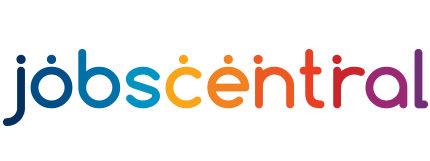
We’ve said it again and again, and you probably know it – the academic requirement of a scholarship is just the starting point. With so many applicants for each scholarship, it’s possible that you (and your application) can get lost in the pile with nothing to make it stand out.
Question is: how to make sure you get noticed? While some applicants may have truly impressive achievements to document, it’s more likely that whatever you’ve done, someone else has done too. For example, your volunteering stint with the SPCA is noteworthy, but the SPCA accepts hundreds of volunteers each year.
So, we present some suggestions about how to power up your portfolio, and make yourself stand out. The important thing is to emphasise how your achievements helped you as a person, and what values and takeaways you learnt from them.
(Remember: Never lie or over-exaggerate your achievements. It is dishonest, and you will be easily caught during the interview when your interviewer asks about things you’ve never done.)
As to the specifics, read on.
Be complete and thorough
Your portfolio is a description of everything you’ve done as a student. You can think of it as a kind of student resume, but more detailed and in-depth.
It follows, then, that your portfolio should mention everything you’ve done, even if it sounds small or insignificant. Many a student, modest to a fault, thinks to his/herself, “I can’t mention that, that’s nothing much!”
If you catch yourself thinking something like that, that’s a good sign that you should note down whatever “insignificant” thing it was on your portfolio. For example, it is a good idea to upload your resume to give sponsoring organisations an idea of your work experience.
Your portfolio should mention everything you’ve accomplished, from obvious achievements like CCA awards or volunteer activities, to a holiday jobs and helping your parents with their business.
But why should the sponsoring organisation care that you fed
community cats, for example? To make them take note, you should…
Be descriptive and elaborate
It’s not the activity or project itself that organisations want to know about. Your description of your achievements shouldn’t read like a grocery list with no colour or description, or it will be just as boring as one and the reviewer won’t give it a second glance.
Instead, list not only the name of your achievement, but what it involved. Take CCA participation as an example.
Applicant A writes:
Head of Library Club from 2002-2004
Applicant B writes:
Head of Library Club (2002-2004)
- I was a member of the Library Club from 2000 onwards, and
was promoted to Head in 2002. In that position, I was entrusted with leading
other library club members and holding regular school fairs that promoted
literacy and reading within the school. During my term, we also held a Chinese
Literature Appreciation Fair with my sister school in 2003. Beyond shelving
books and maintaining the quiet of the library, I gained a deep appreciation
for literature and the transformative power of words.
Which applicant stands out more, and why? Applicant B provided a description of his activities, highlighted important milestones, and also elaborated on how his CCA had helped him as a person. Such details impress the sponsoring organisation, as they speak well of an applicant’s memory, skills and personality.
Beyond a good description, however, it is also imperative
that you…
Be specific and include necessary information
The two applicants above do get one thing right. They write “Head of Library Club (2002-2004)”.
Whenever you add something to your portfolio, make sure to include the following information:
· Name of the activity (in full)
E.g. “Community Involvement
Programme with YMCA”, “Beach Cleanup 2015”
· How much time did you put into the activity
E.g. 2 meetings/week, quarterly
· How long did you participate
E.g. 4 years, 2 semesters
· What was your position (if applicable)
E.g. Coordinator, Vice President
· Description of activity
Similarly, for an award or course, you should list:
· The name of the award/course
E.g. “A*STAR Science Award (JC)”, “Introduction
to C Programming”
· When you earned it
E.g. “Completed on 27 September
2005”
· Who presented/sponsored it
E.g. “Presented by NTUC Fairprice”
·
Description of the award/course
You don’t have to list all the information in separate bullet
points like its presented here, but it should be easily visible at a glance.
Now that you know how to make yourself stand out, get down to
it and start writing! A great portfolio is the first step to standing out as a
scholarship applicant.
Business photo created by freepik - www.freepik.com



